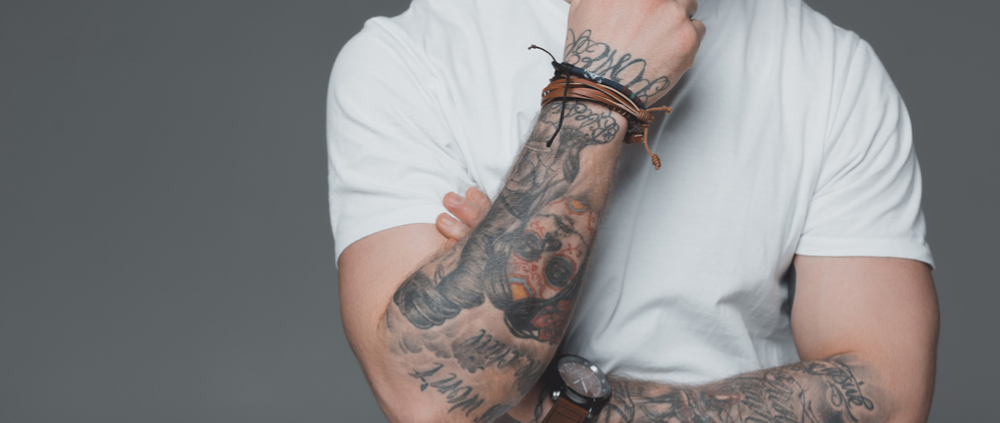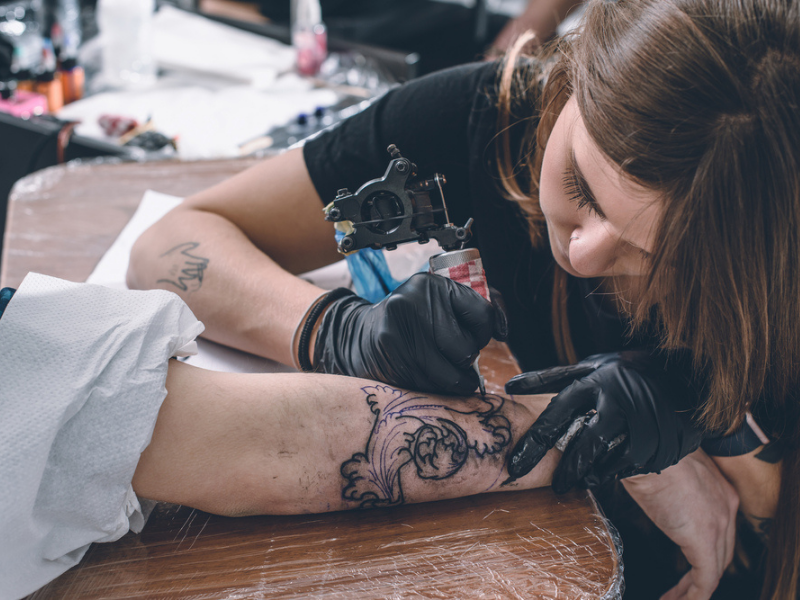When To Get A Tattoo Touched Up
Contemplating when to get a touch-up for a tattoo is something that comes up when you discover distinct changes in your tattoo. After all, a tattoo is something permanent that needs attention, like the rest of your body. You want it to look good all the time, not just sometimes.
Overview of Your Tattoo
Watch for changes in your tattoo because of overexposure to the sun. Examine whether loss of pigment in the tattoo is happening. The shape of the tattoo may go through changes due to various skin conditions. Aging skin can also affect the permanence of one. A lot of people believe that once you get a tattoo, you’re done forever, but with the ever-changing nature of the skin with both the outer and inner areas of your skin, these things can influence the need for a touch-up. Tattoos simply deteriorate like anything else and need touchups. How will you actually know whether your tattoo needs correction or improvement? Here is what you should specifically look for so you know what to do to prepare for overall enhancement.
What to Look For
- The tattoo is old
- The tattoo has shown fading
- The tattoo is showing discoloration color and pigment loss
- The tattoo has an original placement that is exposed to friction and other areas that are prone to stretching and perspiration
- The tattoo shows infection
- The tattoo ink was distributed too deeply within the skin and has an irregular spread
1. What a Tattoo Artist Will Do with Fading
When a tattoo loses its color, brightness, and intensity, you’ll see that fading is the eventual effect. This may be an indication that your tattoo requires a touch-up. With a tattoo that’s fading, an artist will likely use the ink in the areas where the fading is the worst. With a few touch-ups in the most crucial areas, your old tattoo will return to its original look. An artist won’t add ink to the entire tattoo, just to the areas that show fading.
Most artists with local tattoo shops near me will usually forewarn customers about using sunscreen over the area to prevent fading that comes from the sun’s ultraviolet rays. Also, take care of your tattoo by keeping the area hydrated. Apply a moisturizing lotion, drink enough liquids, and try to remain in good health.
2. Tattoo and Specific Body Placement
With tattoo placement in an area of the body where friction and sweating occur, there is the chance that the tattoo will lose its pigment and shape.
Say you have a tattoo on your hand, foot, ankle, or other areas where it’s prone to friction, stretching or sweating. There is the likelihood that any of those areas could lose their shape, sharpness, lines, and pigment.
Tattoos don’t do well with friction, moisture, and stretching. With these changes, an impact is set in motion on the tattoo and it reacts in different ways. It will happen eventually, but you can still touch it up and allow the vibrancy of the ink and the shape to reappear in a new way.
Again, proper care is important if you want the tattoo to remain fresh and last longer after a touch-up. You don’t want the tattoo to lose its brightness and shape right away. You want to be sure to use sunscreen, keep your tattoo clean, and wear loose clothing where you can avoid friction, stretching, and accumulated moisture.
3. Tattoo Infection
You can experience infection because of contamination of tattoo equipment, by excessive touching and peeling of a tattoo while it goes through the healing process or when bacteria appear during healing.
A tattoo infection can be painful and affects the newly tattooed skin. The skin may bleed and discharge ink and there is swelling and redness. Damage occurs to the tattoo, which doesn’t make for a pleasant experience.
Fortunately, infections are not likely to get worse as there are treatments through antibiotics and fast action, but the aftereffects take time to heal, which leaves the new tattoo in disrepair.
So, you can foresee getting a touch-up but not until you speak with your health care provider or a dermatologist about whether your skin is up to another go-round with the tattoo needle and how to avoid another infection.
4. Tattoo Ink Distribution
Proper placement of the ink in a tattoo is critical. If an artist does a tattoo the right way, the correct amount of ink goes into the dermis (skin layer). When you use an artist who has less experience, the ink goes deeper into the skin layers and it doesn’t stay in place. During the healing phase, the ink spreads out and goes beyond the lines of the tattoo. The tattoo, of course, looks distorted and unprofessional. In tattoo terms, it’s called a tattoo blowout.
A touch-up is fairly easy to do through the addition of a new design and lengthening the lines of the tattoo. Usually, a blowout is fixable with a tattoo cover-up or by tattoo fading. Again, a simpler option is a touch-up to give the tattoo a suitable look.
Just be sure that you check with Philadelphia tattoo shops about touch-ups before you go with the first shop on the list. You want your touch-up appointment with an experienced, reliable, and professional artist.
5. An Old Tattoo
Once several years have gone by from your initial tattoo, the tattoo, unfortunately, changes with age. Changes either occur because of time or when aging sets in and the skin loses its elasticity and stretching occurs.
It’s a normal process and one that’s inevitable. There are ways you can prolong the aging process, but eventually, time wins out.
Touch-ups can be done with an aging tattoo. It’s a bit more difficult because of aging skin, but with the right artist who understands skin texture and stretched skin, you’ll get the right results.
Call us
If you have an interest in getting a tattoo for the first time or know you need a touch-up for an older tattoo, consider the Oracle Tattoo Gallery in the Philadelphia area. We’ve been in business since 2020. Our tattoo artists have the training and experience, plus we offer a variety of tattoo styles. Call us at 215-638-1601.





